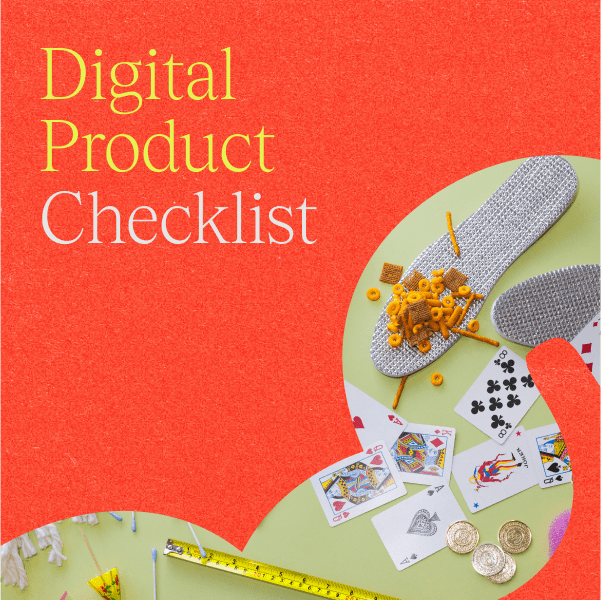As a content creator, there are multiple reasons why exploring selling digital products is beneficial to you, your brand, and your bank account. Case-in-point: the ebook.
It doesn’t matter what your content niche is. If you’re an expert in any field, chances are there’s an audience hungry for your knowledge and skills, which means there’s potential to make money selling ebooks.
When it comes to selling ebooks, you control the content, design, and pricing. One of the best things about ebook creation is that it’s a cost-effective and low-overhead digital product that won’t make you Tetris the heck out of your closet to make space for physical inventory.
Sounds great, right? Have you found yourself wondering how to sell ebooks online? Read on and learn more about how to sell ebooks online like a pro.
Why you should sell ebooks online
It’s no secret that content creation is a hustle. Sometimes you need to think strategically about how you can increase your income in the spirit of being able to keep doing what you love to do.
If you’re looking for ways to increase your brand awareness, revenue streams, and earn passive income, look no further than the ebook. We dive into all the benefits of an ebook below.
Establish brand awareness and spread your knowledge

So you’re an expert on a topic? It’s time to flaunt that knowledge! Nothing feels better than sharing your expertise with the world. Actually, you know what feels even better? Making money from sharing your expertise with the world.
As a content creator, producing and selling ebooks can be a powerhouse tactic to establish brand awareness, flaunt your expertise, and show that you’re an authority in your content niche.
The best part of ebooks is that once your ebook gains traction, it will only boost your brand and credibility further, leading to more opportunities and even more income.
Diversify your income stream

As a content creator, you probably already rely on multiple revenue streams like brand deals, affiliate programs, making UGC for brands, or selling merch online. One of the most significant advantages of producing and selling ebooks online is the opportunity to open up a brand new revenue stream for your creator business.
And not just any revenue stream. By adding ebooks into the mix, you open up the potential for a steady stream of income indefinitely. One of the best things about producing and selling ebooks is that it opens up a revenue stream that isn’t dependent on other people’s timelines, strict contracts, or shipping logistics.
Think of it this way, the more revenue streams you have, the more opportunity you have to make money. It sounds simple, right? It definitely can be! But sometimes, when you’re caught up in the hustle of actually producing and managing content, adding on a whole new revenue stream can feel overwhelming.
Luckily, an ebook only needs to be produced one time, which leads us to our next favorite thing about selling ebooks online — passive income.
Make passive income

As a creator, there are multiple different revenue streams available to you.
If you find yourself thinking about diversifying your cash flow, you should consider spending some time and energy on producing and selling digital products like ebooks. Why? Because an ebook can be a lucrative tactic for generating passive income online, aka regular income made with minimal effort.
For the record, when we say “minimal effort,” we don’t mean you should slack off on your content. What we mean is that you only have to produce your ebook content one time. Yet, once you share it online, you continue to make money from it over and over again.
Ebooks are quickly becoming a popular medium among content creators as a source of passive income, because they generally require little effort to produce, allow you to skip out on all the supply chain chaos, and avoid complicated shipping logistics.
Plus, as a digital product, an ebook presents a diverse range of design elements that a tangible book can’t provide, like clickable links, quizzes, and graphics.
How to create and sell ebooks
Step 1: Identify your target audience

First things first, you’ll need to identify and define your target audience because you’ll want to speak directly to them. You should be thinking: “What does my target audience need?” Or, “What value can I bring to their table?”
Before you begin writing, you want to make sure that you’ve identified and really know your audience. When it comes to writing an ebook, it’s not the time to be a generalist. Rather, the goal of an ebook is to create highly personalized content that provides valuable information to your readers.
If you’re feeling stumped and not 100% sure who your target audience is, start by asking yourself questions like:
Who is my ideal reader?
Think about demographics such as age, gender, location, occupation, and interests.
What are my reader’s challenges?
The goal here is to identify the problems or issues your target audience faces, and how your content can provide solutions.
How does my reader consume content?
Find out which platforms and mediums they prefer. Do they lean towards blogs, social media, videos, podcasts, or newsletters?
What are your reader’s goals and aspirations?
Understanding the goals and desires of your target audience will help you tailor your content to their needs.
Who are your competitors and how do they target their audience?
You don’t want to produce copycat content, but a healthy competitor analysis can help you gain insight into your shared audience.
What feedback have you received from your current audience?
Has your audience already shared valuable insights on your content? If so, how can you use it to shape future content?
What language and tone should you use to connect with your audience?
It’ll trip your readers up if you go from casual-cool to full-on academic. The tone you use in your ebook should be similar to how you communicate with your audience on other content channels.
By conducting research and asking yourself these questions, you’ll gain a deeper understanding of your target audience’s needs and preferences. The end game here is to produce ebook content that truly connects and resonates with your readers.
Step 2: Come up with a topic and research

If you’re a seasoned content creator, you’ll want to choose a topic for your ebook that’s aligned with your current content.
Think of your ebook as an opportunity to deep dive into a specific topic that you’re super eager about sharing. If you know your target audience well, chances are you already know what types of challenges they need help with.
If you’re just getting started in the content game, in addition to thinking about who your target audience is, you’ll also want to consider your own business goals. Take the time to meditate on what your content niche is. As long as you have your content foundation figured out, success will follow.
Step 3: Create an outline

The rumors are true — writing a book can be time-consuming. So before you begin writing, consider outlining your content.
Not only will an outline help to keep you on track, but it will also give you a rough idea of how much writing you should dedicate to each section. This is key for keeping a consistent and engaging flow throughout your ebook.
Don’t worry, you don’t have to be a professional writer to know how to do it either. There’s no right or wrong when it comes to outlining content. Just think of it as though you’re mapping out a class syllabus on your topic.
Step 4: Write your ebook

So you have your outline, and now you’re ready to write your ebook. Congrats!
In addition to the actual writing and research involved, you’ll also want to consider certain design elements. We mean things like your ebook cover design, content formatting, typeface, and any images, graphics, or templates that bring added value to your content.
Credible sources
You may be an expert on your topic, but you’re not the only one. Readers tend to respond positively to content with details that enhance its credibility.
So, a surefire way of adding value to your content is to include references to experts in whatever content field you’re writing about. This may include resources like recent surveys, expert quotes, diagrams or infographics, etc.
Pro tip: Go the extra mile and interview other experts or content creators in your content niche. Not only does this increase the credibility of your ebook, but it’s also an opportunity to network with and promote other potential collaborators.
Add CTAs
A CTA (also known as a call-to-action) can be a prompt for anything from visiting your web page or social media channels to downloading a specific cookbook recipe or design template.
By adding a CTA (or even multiple CTAs) to your ebook, you’re essentially guiding your readers into taking the next steps that you want them to take.
Ultimately, the main goal of adding a CTA to your ebook is to encourage your readers to take a big step toward another one of your content and/or revenue streams.
Step 5: Set up your online store

Before you set up your online ebook store, you’ll want to research which publishing platform is best for you. A good rule of thumb is to keep an eye out for user-friendly ebook publisher platforms that offer easy uploads, clear terms, royalty options, and fair commission structures for self-published authors. Alternatively, you can sell your ebook on an e-commerce platform that supports digital product sales, such as Etsy.
Once you’ve decided on a platform, you’ll need to prepare your ebook in one of the many preferred ebook formats like PDF, EPUB, MOBI, or AZW.
If you don’t already have a website, it’s a good idea to set one up before you launch your ebook. Even if you decide to sell your ebook on a major publishing platform like Amazon Kindle Direct Publishing (KDP), you’ll still want to promote your ebook from a dedicated landing page.
Having your own website also offers you the opportunity to showcase and promote your other content as well. The Leap‘s mobile-optimized link-in-bio storefront makes it easy to start selling your ebooks directly to your audience, right now. Interested? Try The Leap for free!
4 pro tips to get the most out of your ebook sales
So you’ve written your book and now you want to reap the sweet rewards? Read on to learn our top tips on how to get the most out of self-publishing your ebook online.
1. Promote your ebook with content

While we love selling ebooks for the potential to make some serious passive income, success doesn’t (always) happen overnight.
Once you’ve written and published your ebook, it’s time to promote it. Because at the end of the day, the more you promote your ebook, the better your chances are of selling it.
We deep dive into the top four methods for promoting your ebook online below.
Social Media
When promoting your ebook, you’ll want to tap into your existing following to generate that quality buzz and hype around your ebook. Chances are, if you’re a content creator, you already have at least one social media channel. So think about promoting your ebook across channels like TikTok, Instagram, YouTube, or LinkedIn.
Make sure to prioritize social channels that resonate with your audience the most.
For example, if your ebook happens to be a guide on how to produce a killer graphic design portfolio, a business and employment-focused social media channel like LinkedIn would be a great place to promote your own ebook (in addition to other social channels where you’ve amassed a significant following).
Another advantage of using social media for ebook promotion is that many platforms offer tools for optimizing your strategy. Social media platforms like YouTube and TikTok have advanced features for monitoring analytics to track engagement and conversion rates. This data can be essential for learning and fine-tuning your approach across the promotion journey.
If you have a mailing list, you already know that you have it for a reason.
Having email subscribers is integral to keeping your audience up to date. Your email subscribers are already interested in your content, so you’ll want to take full advantage of your email list to promote and sell your ebooks online.
If you need to, consider segmenting your contacts by those subscribers who would be most interested in your ebook. The last thing you want to do is spam the inbox of subscribers who may not find your ebook content relevant to their interests.
If you don’t already have an email subscriber list, you might want to consider offering free ebooks as a lead magnet tool. A lead magnet is a valuable piece of content offered to customers or readers in exchange for their contact information. It’s a common tactic used in marketing to grow a customer base, and is equally useful for content creators to build their audience.
Podcasts
If you already have a podcast, amazing! Promoting your ebook on your own podcast is a great way to monetize it by converting listeners into paying customers.
If you don’t have a podcast, don’t fret. Producing and selling ebooks is a great opportunity to network and partner with podcast hosts.
You’ll want to promote your ebook on podcasts that produce content similar to your content niche. If you don’t already have some podcasts in mind, do some research and never hesitate to reach out to podcast hosts and producers.
Developing a relationship with other content creators is usually a win-win situation for all parties involved.
SEO
SEO (also known as search engine optimization) can be a potent boost to your ebook’s visibility and reach if done right. But what is SEO, you ask?
SEO is a tool used by many businesses, content creators, and marketers to boost online visibility. To sell digital products like an ebook, SEO is invaluable because it increases the visibility of your ebook title in search results, which in turn attracts targeted readers and enhances credibility.
That being said, you’ll need to do some research here. It’s essential to locate the appropriate keywords and understand their ranking within the SEO sphere. But once you crack the code, SEO can be a very cost-effective way to level up your promotion game.
2. Collect testimonials and reviews

Thanks to an economy where people can leave a review on anything from brunch to a national park, as a content creator, you never want to underestimate the power of a positive testimonial.
Positive reviews can help build your credibility as an ebook author. But they might not come to you unprompted. Once you’ve published your book and it’s been on the market for a while, you might want to consider reaching out to your fanbase with a quick survey requesting their feedback on your content.
Positive or negative, there’s always value in gathering feedback. At the end of the day, you’ll get to decide which testimonials or feedback you want to share with your audience. And ultimately, the best content creators are those that are really listening and responding to their audience.
Feedback in the form of testimonials, interviews, or reviews is not only a valuable tool for promoting your ebook, it’s also fuel for creating even higher-quality future content.
3. Track your ebook sales and analytics

Tracking sales and analytics for your ebook gives you the power to fine-tune your strategy and connect with your audience on a more detailed level. Certain publishing platforms like Amazon KDP will provide in-depth insights like real-time sales data and performance metrics.
As a content creator, it’s never a bad idea to set up Google Analytics on your website or landing page, as you can use this tool to track ebook-related traffic, clicks, and conversions. The best part about Google Analytics is that it’s free. And who doesn’t love a free tool?
Beyond publishing platforms, most social media channels have built-in stats that allow you to monitor your social media platform for clicks, shares, and engagement related to your ebook posts.
Email metrics can also provide a goldmine of insights when it comes to tracking the analytics of your marketing efforts. Make sure to pay attention to email open rates, click-throughs, and conversions.
4. Nurture your audience

Nurture might seem like a strong word, but before you start thinking about the personality traits of the Cancer zodiac sign, or that video of a mamma panda taking care of her cub, hear us out. In the context of marketing and sales, to “nurture” essentially means maintaining communication with your target audience base.
In a nutshell, once you’ve captured a reader’s attention, you obviously want to keep it (hence the term, “nurture”). For example, if one of your followers has purchased a digital product from you before — whether it’s an ebook, channel membership, design template, or online course — chances are, they’re willing to do it again.
There are many ways to maintain engagement with the members of your audience who have proved themselves at any point to be loyal. For example, maybe you decide to send your loyal followers the first chapter of your ebook as a sneak preview, or maybe you send an early download link.
Another option is to consider investing in paid advertisements to keep engagement high. For example, Facebook ads can retarget people that have visited your website, landing page, or Facebook page before.
Set yourself up for success!
Ready to create and sell your very own ebook?
Download the Leap’s free digital product launch checklist for more useful tips on how to sell ebooks and unlock your passive income potential (aka making bank while you sleep).
FAQ
Is selling ebooks profitable?
Self-publishing and selling ebooks can be a goldmine for creators. Due to low production costs and no physical inventory, your profits can soar. Not to mention that you can reach a global audience without having to deal with international shipping hassles.
But let’s be real, to get to the point where you can make a profit from your ebook, you can expect a fair amount of hustle (which no content creator isn’t privy to). Success takes work and when it comes to an ebook, the work is engaging with your audience, building your brand, and staying consistent on social media so you can increase your chances of the most coveted marketing strategy — that word-of-mouth magic.
When it comes to ebooks, the key to success is to find your niche. You want to make your ebook stand out. That means if you provide value and offer solutions, there’s potential for your readers to go from fans to superfans in no time.
It’s not an overnight thing though! So don’t get discouraged if you don’t start raking in the bucks right away. It may be annoying to hear, but patience and persistence do pay off. But, don’t worry. As your ebook gains traction, your profits will rise.
What are the best platforms for making money selling ebooks?
Many content creators wonder how to sell ebooks on Amazon, and for good reason. Some of the most popular platforms to sell ebooks online include Amazon’s Kindle Direct Publishing or Google Play Books. Both options are relatively easy to use, quick to set up an account, and offer several different pricing and royalty options.
Amazon’s Kindle Direct Publishing and Google’s publishing platforms cater specifically to uploading and selling ebooks online. However, several other e-commerce platforms are more than suitable for selling ebooks, like The Leap.
These platforms are not only great for selling ebooks, but also other digital products like online courses, website themes, or templates.
When shopping for your ideal publishing platform to sell your ebook, you’ll want to look closely at the pay structures.
For example, both Amazon and Google have a commission structure built into their services. While not uncommon, this commission structure means that the publishing platform will take a cut of revenue from your ebook sales. Long story short, just make sure to read the fine print before you decide which platform to publish your ebook on.
Follow The Leap on TikTok, Instagram, and YouTube for more monetization tips for creators. We also make a newsletter.




